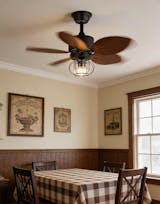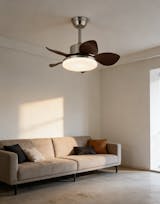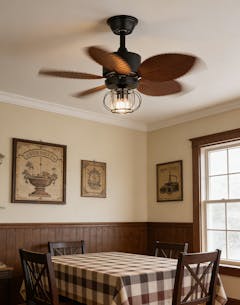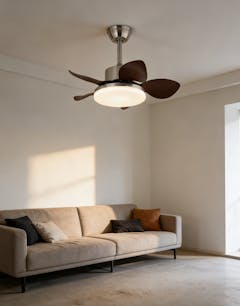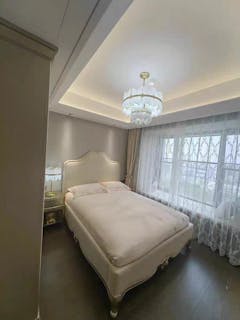It took a while to receive the lamps but they were packaged well and the instructions for mounting them were simple.. the only negative is that the chain pull to turn the lamp on/off is pretty clunky.. when pulling down, it feels as though you’re pulling every little ball bearing thru the opening .. click, click, click instead of a smooth flowing operation..
The design works with both contemporary and transitional décor. Very versatile ceiling fan light.
If you want a quiet ceiling fan with light for a bedroom, this is a good option.
I wasn’t sure from the pictures, but in person this Amelia ceiling fan light looks very nice and fits the space well.
Swapped out an older fan for this Hazel ceiling fan light and it’s a noticeable improvement — quieter, better lighting, and more stylish.


























